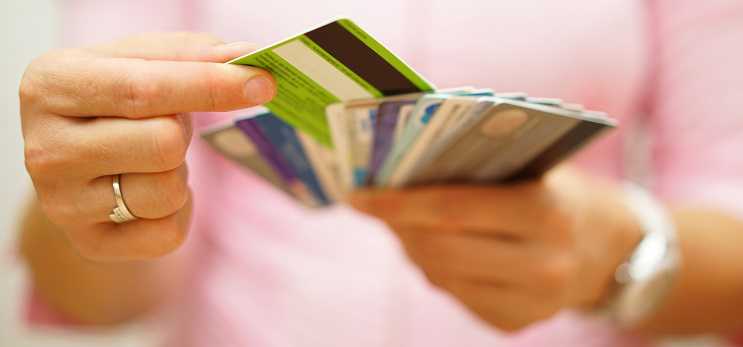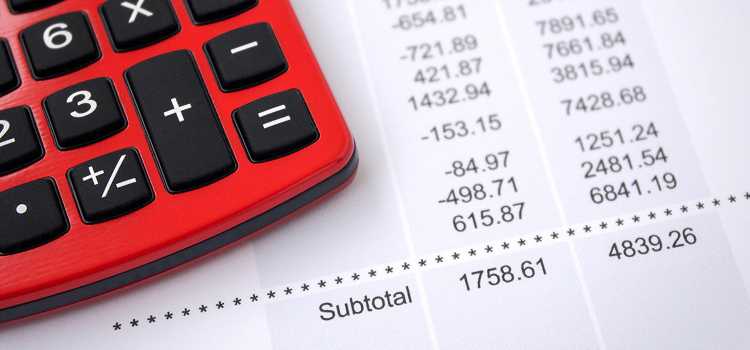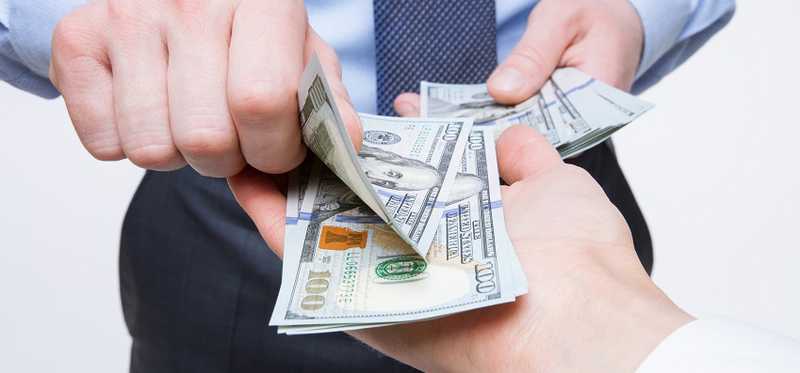The 9 Most Annoying Bank Fees

The 9 Most Annoying Bank Fees
It's good to be aware of these
Banks charge fees on almost everything, from relatively routine transactions to troublesome overdrafts. These fees can be annoying because few people take the time to understand them, and they often affect the people who can least afford to pay a fee in the first place.
Some banks make a killing from a laundry list of fees, as many large and regional banks make as much as 40% of their income from fees they earn on deposit accounts, loans, and other products. In this slideshow, we’ll look at the nine most annoying bank fees, why banks charge them, and how you can avoid paying these fees in the future.
Previous
Next

1. Account maintenance fees
The simple truth is that not every accountholder is a profitable customer for the banking industry. People who simply use checking or savings accounts are often the least profitable of them all. According to data from the Federal Reserve, banks earned a net interest margin of approximately 3.15% in the third quarter of 2017. Thus, a bank might earn only $31.50 in interest each year lending out $1,000 that a customer keeps in his or her savings account.
Account maintenance fees help banks justify the effort of servicing accounts with small deposit balances. Bank of America charges as much as $12 in monthly maintenance fees on its core checking account, but customers can avoid the fee if they keep a minimum daily balance of $1,500 or make at least one qualifying direct deposit of $250 each month. Such balance requirements are common, but credit unions and online banks often have account options with trivial minimum balance requirements and no maintenance fees.
Previous
Next

2. Returned deposit fee
Let’s say your friend writes you a check for $200. You deposit the check at your bank, and the funds show up immediately in your account. Only later does your bank discover that the check is no good, and your bank erases the $200 from your account. In addition, your bank will also hit you with a returned deposit fee of $15 to $30.
Not only did you get stiffed on the payment, but you owe the bank because of it. That’s a raw deal, but it's exactly how returned deposit fees work. In theory, this fee is supposed to dissuade people from depositing bad checks, but there is no way to know with certainty that the payer actually has the cash in their account to cover each check. While most financial institutions charge a fee for returned deposits, some may be willing to waive it for loyal customers who don't make a habit of depositing bad checks. Speak to a customer service rep to see if the bank will waive the fee in good faith, as many probably will the first time it happens.
ALSO READ: Americans Spend $15 Billion in Bank Overdraft Fees. Here's the Best Way to Avoid Them
Previous
Next

3. Foreign transaction fees
Going on a trip overseas? You may want to read the fine print on your credit card before hopping on a flight. Foreign transaction fees can add up to 3% of the purchase amount to every charge when you swipe your card overseas, or purchase a product from a merchant who processes payments through a foreign bank. If you spend $2,000 while on an international vacation, you might pay $60 in foreign transaction fees on your combined purchases.
The truth is that these fees are completely avoidable if you plan ahead, but banks hope customers will forget the fine print when making an international swipe. If you plan to go overseas, get a card that won't penalize you for using it overseas. (Most travel-focused credit cards are free of foreign transaction fees.)
Previous
Next

4. Statement fees
Banks often charge fees to customers who want to receive paper statements each month. These fees are intended to defray the cost of paper, envelopes, and postage, and typically cost about $2 for each mailed statement. Relative to the cost of printing and sending statements by snail mail, statement fees aren’t all that high, but they certainly add up over time. Paying $24 a year in statement fees on an account with a $4,000 balance is the equivalent of earning negative 0.6% interest on your account each year!
Banks may also charge you a fee to get a paper statement at your local branch. My credit union charges $4 to get another copy of a statement from a teller at the branch, but if I log in to my account online, I can download a copy of my statement to print at home for free or at any office supply store for as little as $0.20 a page. Opt-in for digital statements when possible to avoid this fee.
Previous
Next

5. Prepayment penalty fees
It’s relatively common for mortgages to carry prepayment penalties in which the borrower has to pay a fee equal to a percentage of their balance (1% to 2%) for paying off a mortgage earlier than originally expected. Car loans can also carry prepayment penalties, assessed at a flat fee or as a percentage of the balance when you pay off a loan early.
These fees are annoying, but there are reasons they exist. Banks incur upfront costs of making a loan with the hope of making it up from interest charges later. These costs include expenses for running your credit, checking your application, and paying the loan originator for generating the loan. If you pay off the loan quickly, the bank would likely lose money on the deal. There’s no way around a prepayment penalty once you’ve signed the dotted line, so be sure to read every loan contract in full before signing it. In many cases, banks will allow you to pay off a portion of your mortgage balance early each year without paying a fee to do it, but unless you read the fine print, you'll never know how prepayment fees work.
ALSO READ: This Little-Known Bank Is Forbes' No. 1 Pick for 2018
Previous
Next

6. Debit card replacement fees
Most banks don’t charge fees to get a replacement debit card, but some do. For example, PNC Bank charges a fee of $7.50 to replace a debit card. The fee can be waived, but only for people who have damaged cards or who have a Performance Select checking account (which carries a monthly fee of $25 unless you keep a balance of at least $5,000!).
That said, almost all banks charge a fee for replacing a debit card quickly. Getting a new card immediately in a local branch or having it sent via overnight courier is costly for the bank, so they pass on the cost to consumers in the form of debit card replacement fees. It can help to have a second card (like a credit card) lying around to pick up the tab in the event your primary card is lost, stolen, or damaged so that you can afford to wait for slower, less expensive (or free) replacement options.
Previous
Next

7. ATM fees
Fees to use ATMs wouldn’t be so annoying if it weren’t so difficult to get to bank branches during normal banking hours. Many banks open at 9 a.m. and close as early as 5 p.m. on weekdays. As for weekends, most branches only open for a few hours on Saturday. You can forget about Sundays and most federal holidays, when a majority of banks close for business. That leaves ATMs as the only way to get quick access to your money, some of which carry high fees on every transaction.
There are two types of ATM fees: surcharges and out-of-network charges. Surcharges are what you pay the ATM owner to use their machine. In 2017, the average surcharge hit an all time high of $2.97 on average. On top of this fee, banks often charge out-of-network fees for using an ATM that your banking institution doesn't own, or doesn't have an agreement with. Last year, the average out-of-network fee rose to $1.72. The truth is that these fees are a pure profit center for banks and ATM owners, who can afford to place ATMs almost anywhere thanks to the sky-high fees levied on every withdrawal. Avoid these fees by only visiting in-network banks, or using a bank like Charles Schwab, which offers unlimited ATM fee reimbursements.
Also Read: The Surprising reason this hated bank fee is soaring
Previous
Next

8. Stop payment fees
You write your electric company a check, but somewhere between your checkbook and their bank, the check was lost or stolen. You write another check for the same bill, but you want to make sure that the first check isn’t later found and deposited for a double charge, or cashed by someone else. The only way to do this is tell your bank to stop payment on the first check and refuse clearing it. Most banks charge $15 or $30 for each stop payment request.
The most annoying thing about stop payment fees is that they generally only protect you for six months. After that, banks assume that the check will never be deposited, as most banks won't accept a check older than that. In theory, if you wanted to guarantee that the check will never be cashed, you'd have to keep paying a stop payment fee over and over again. Banks charge these fees because stopping payment on a check is time-consuming and expensive, and they're on the hook for the money if the check is cashed after you've asked to stop payment.
Realistically, there isn’t much you can do to avoid this fee other than bank with companies that don’t charge a stop payment fee. Better yet, stop using checks altogether. Every time you use a check, you’re handing someone a piece of paper with your bank routing number and checking account number printed on it. In the wrong hands, this information can cause way more problems than a $30 stop payment fee.
Previous
Next

9. Early closure fees
Banks spend a lot of money attracting depositors with expensive advertising programs and promotional interest rates. They spend heavily up-front, hoping to make the money back over time by lending out your deposits and hopefully giving you a car loan or mortgage in the future.
Early account closure fees help banks defray the upfront cost of opening a new account for customers who close their accounts shortly after opening it. Typically, these fees only affect people who close their account 90 to 180 days after opening. Avoid this fee by keeping an account open longer, and by verifying the date on which your account was considered opened so that you know when you can close it without paying an early closure fee.
ALSO READ: The Surprising Reason This Hated Bank Fee Is Soaring
Jordan Wathen has no position in any of the stocks mentioned. The Motley Fool has no position in any of the stocks mentioned. The Motley Fool has a disclosure policy.
Previous
Next
Invest Smarter with The Motley Fool
Join Over Half a Million Premium Members Receiving…
- New Stock Picks Each Month
- Detailed Analysis of Companies
- Model Portfolios
- Live Streaming During Market Hours
- And Much More
READ MORE
HOW THE MOTLEY FOOL CAN HELP YOU
-
Premium Investing Guidance
Market beating stocks from our award-winning service
-
The Daily Upside Newsletter
Investment news and high-quality insights delivered straight to your inbox
-
Get Started Investing
You can do it. Successful investing in just a few steps
-
Win at Retirement
Secrets and strategies for the post-work life you want.
-
Find a Broker
Find the right brokerage account for you.
-
Listen to our Podcasts
Hear our experts take on stocks, the market, and how to invest.
Premium Investing Services
Invest better with The Motley Fool. Get stock recommendations, portfolio guidance, and more from The Motley Fool's premium services.